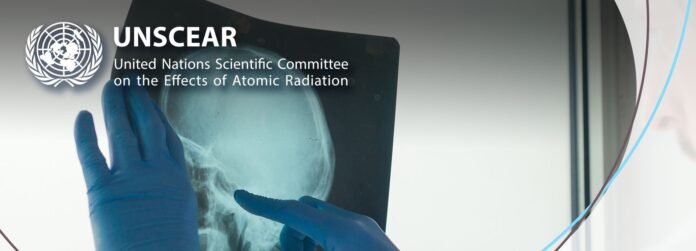Overview of UNSCEAR’s 71st Session and New Leadership
The United Nations Scientific Committee on the Effects of Atomic Radiation (UNSCEAR) convened its 71st session in Vienna, drawing together an assembly of approximately 180 expert scientists from 30 member states and 10 international organizations. This significant gathering underscored the global commitment to understanding and mitigating the effects of atomic radiation, with particular emphasis on public exposure to ionizing radiation and the incidence of second primary cancer following radiotherapy.
During this pivotal session, the committee approved two groundbreaking scientific reports. These reports are anticipated to play a crucial role in shaping future policies and research directions concerning radiation exposure and its health implications. The session’s outcomes highlight UNSCEAR’s ongoing mission to provide authoritative scientific assessments on radiation effects, thereby informing and guiding international health and safety standards.
A notable aspect of the 71st session was the election of the new bureau for the 71st and 72nd sessions. Sarah Baatout from Belgium was elected as the chair, bringing a wealth of expertise and a fresh perspective to the committee’s leadership. She is joined by vice-chairs Anssi Auvinen from Finland, Aayda Al Shehhi from the United Arab Emirates, and Reiko Kanda from Japan, each of whom brings diverse scientific backgrounds and regional insights. Additionally, Carol Robinson from Norway was elected as the rapporteur, tasked with documenting and communicating the committee’s deliberations and findings.
The committee also took the opportunity to express its profound gratitude to the outgoing chair and vice-chairs for their dedicated service and contributions. Their leadership and commitment have significantly advanced UNSCEAR’s mission and its impact on global public health. The election of the new bureau reflects a continued dedication to fostering international cooperation and advancing scientific knowledge in the field of atomic radiation.
Groundbreaking Report on Second Primary Cancer After Radiotherapy
The recently approved scientific report on second primary cancer after radiotherapy marks a significant advancement in oncology. Radiotherapy, a cornerstone of cancer treatment, is administered to roughly 50% of all cancer patients, and about 40% of those who achieve remission have undergone this therapy. This widespread utilization underscores the importance of understanding its long-term implications.
The report meticulously examines the incidence of second primary cancers arising post-radiotherapy. It reveals that the risk is remarkably low, providing a crucial reassurance to both patients and healthcare providers. This finding is pivotal, given the critical role radiotherapy plays in cancer management. The comprehensive analysis suggests that the benefits of radiotherapy far outweigh the potential risks, reinforcing its status as a vital therapeutic modality.
By delving into extensive patient data, the report offers a nuanced understanding of cancer risks associated with radiotherapy. It highlights that while there is a theoretical risk of developing a second primary cancer, the probability remains minimal. This reassurance allows oncologists to advocate for radiotherapy with greater confidence, knowing that it continues to be a safe and effective treatment option.
Moreover, the report’s findings emphasize the importance of personalized treatment plans. Oncologists can now better assess the risk-benefit ratio of radiotherapy for individual patients, ensuring that those who stand to gain the most from this treatment are accurately identified. This tailored approach not only enhances patient outcomes but also bolsters the overall efficacy of cancer therapy protocols.
In essence, this groundbreaking report not only advances our understanding of the long-term effects of radiotherapy but also solidifies its pivotal role in cancer treatment. The low risk of second primary cancer, coupled with the substantial therapeutic benefits, underscores the importance of continuing to pursue radiotherapy as a cornerstone in the fight against cancer.
Insights on Public Exposure to Ionizing Radiation
The UN Scientific Committee has approved a comprehensive report that delves into public exposure to ionizing radiation from 2007 to 2022. This pivotal analysis highlights that natural sources, especially the inhalation of radon, thoron, and their decay products, remain the principal contributors to the worldwide average annual effective dose of ionizing radiation. Such findings underscore the critical need for enhanced understanding and management of natural sources of ionizing radiation.
Natural radiation sources account for a significant portion of public exposure. Radon and thoron, both radioactive gases, are particularly pervasive in certain geographical regions, emanating from the earth’s crust and infiltrating homes and buildings. Their decay products, when inhaled, can lead to significant health risks, including lung cancer. This underscores the imperative to monitor and mitigate exposure levels in residential and occupational settings.
Global exposure levels to ionizing radiation vary widely, influenced by factors such as geographical location, lifestyle, and local building materials. The report provides a detailed analysis of these variables, offering valuable data that can inform public health policies and radiation protection strategies. It emphasizes that while natural sources are ubiquitous, certain areas experience higher concentrations, necessitating targeted interventions and public education campaigns.
Moreover, the report calls for continued research to better understand the long-term health impacts of chronic low-dose radiation exposure. This includes investigating the synergistic effects of different radiation sources and their interactions with other environmental and lifestyle factors. Enhanced scientific knowledge in this area is vital for developing more effective radiation protection standards and guidelines.
Public awareness is another critical component highlighted in the report. Educating communities about the sources and risks of natural ionizing radiation can empower individuals to take preventative measures, such as improving ventilation in homes and workplaces to reduce radon levels. Public health initiatives aimed at raising awareness and promoting simple, cost-effective mitigation strategies can significantly reduce exposure and associated health risks.
Future Vision and Strategies: UNSCEAR’s Roadmap for 2025-2029
UNSCEAR has meticulously outlined a forward-thinking vision for its future programme of work from 2025 to 2029, aiming to further advance scientific knowledge and public health. A cornerstone of this vision is an innovative public information and outreach strategy designed to enhance global awareness and understanding of ionizing radiation’s effects. The UNSCEAR global survey on public exposure in 2023, which saw the participation of 61 member states, exemplifies this robust approach to data collection. The survey’s success underscores the importance of comprehensive and accurate data in formulating effective radiation protection policies.
Moreover, the increased engagement with 112 UN member states nominating their national contact persons highlights a growing commitment to international cooperation in this critical field. These national contact persons will play a pivotal role in assisting future data collection efforts, ensuring that the data gathered is both extensive and reliable. Such collaboration is essential for addressing the complex challenges posed by ionizing radiation exposure and for developing strategies that protect public health.
To achieve these ambitious goals, UNSCEAR emphasizes the necessity of continued dialogue and cooperation among member states, scientific communities, and public health organizations. This collaborative approach will facilitate the implementation of effective data collection and analysis strategies, ultimately leading to more informed decision-making processes. The committee’s roadmap for 2025-2029 envisions a future where scientific advancements and public health initiatives are seamlessly integrated, fostering a safer and more informed global community.
UNSCEAR’s commitment to enhancing data collection and analysis reflects a broader strategy to harness scientific research for the betterment of society. By continually updating its methodologies and engaging with a diverse array of stakeholders, UNSCEAR aims to remain at the forefront of radiation protection science. This proactive stance will ensure that the committee’s work continues to provide invaluable insights and guidance, contributing to the global effort to mitigate the risks associated with ionizing radiation.

